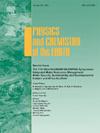坦桑尼亚向日葵种植区气候适宜性的时空变化
IF 3
3区 地球科学
Q2 GEOSCIENCES, MULTIDISCIPLINARY
引用次数: 0
摘要
气候变化将改变世界不同地区未来作物-气候的适宜性。本文评估了坦桑尼亚目前和未来向日葵种植的适宜性。利用1970—2000年基线期和2041—2060年和2061—2080年平均年未来气候条件3个时间尺度下的向日葵空间适宜性气象数据集进行分析。它们包括来自耦合模式比较第6阶段(CMIP6)在~ 1 km2空间分辨率下的平均每月气候数据集。这些数据集是从WorldClim获取的,并使用共享社会经济路径下默认的粮农组织作物生态数据库2000,通过TerrSet软件中的ecoccrop模型生成适宜性图;四种大气环流模式的SSP245和SSP585排放情景。这些型号包括:HADGEM-GCM31-LL, UKESM1, IPSL-CM6A-LR和MIROC6。结果表明,气温将飙升至38℃,而部分地区的降雨量将减少或增加。模型结果表明,1970-2000年坦桑尼亚向日葵种植的气候最优面积(COA)为76.6%。未来的预测显示,在SSP245和SSP585情景下,2041-2060年COA分别减少59%和57%,在这两种情景下,2061-2080年COA将进一步减少52%。我们建议在全国范围内开展活动,利用现有和未来可能适合向日葵生产的气候区。因此,农民和决策者需要意识到未来的适宜性调整,从而更加重视扩大向日葵作物的种植面积。未来的作物气候评估研究需要把重点放在其他作物上,以便制定更广泛的应对策略和适应规划。本文章由计算机程序翻译,如有差异,请以英文原文为准。

Spatiotemporal change of climatic suitability in sunflower-growing areas of Tanzania
Climate change will alter future crop-climate suitability over different regions of the world. This article assessed the current and future suitability of sunflower cultivation across Tanzania. Meteorological datasets on spatial sunflower suitability were applied under three timescales: baseline period (1970–2000) and future climatic conditions for the average years of 2041–2060 and 2061–2080. They include mean monthly climate datasets from Coupled Model Intercomparison Phase 6 (CMIP6) at ∼1 km2 spatial resolution. These datasets were accessed from WorldClim and used to produce suitability maps through Ecocrop model in TerrSet software using the default FAO crop ecological database 2000 under shared socioeconomic pathways; SSP245 and SSP585 emission scenarios for the four general circulation models (GCMs). These models include: HADGEM-GCM31-LL, UKESM1, IPSL-CM6A-LR and MIROC6. The results indicated that temperature will surge to 38 °C, while rainfall will decline and increase in some areas. Model results indicated that the climatically optimal area (COA) for sunflower cultivation occupied 76.6 % in Tanzania by 1970–2000. Future projections showed a decrease in COA by 59 % and 57 % under SSP245 and SSP585 in 2041–2060, with further shrinkage of up to 52 % in 2061–2080 under both scenarios. We recommend a nationwide campaign towards utilization of the existing and future potential suitable climate area for sunflower production. Therefore, farmers and policy makers need to be aware of the future suitability adjustment and hence pay more attention to expand sunflower crop cultivation area. Future crop-climate assessment studies need to focus on other crops in order to create broader coping strategies and adaptation planning.
求助全文
通过发布文献求助,成功后即可免费获取论文全文。
去求助
来源期刊

Physics and Chemistry of the Earth
地学-地球科学综合
CiteScore
5.40
自引率
2.70%
发文量
176
审稿时长
31.6 weeks
期刊介绍:
Physics and Chemistry of the Earth is an international interdisciplinary journal for the rapid publication of collections of refereed communications in separate thematic issues, either stemming from scientific meetings, or, especially compiled for the occasion. There is no restriction on the length of articles published in the journal. Physics and Chemistry of the Earth incorporates the separate Parts A, B and C which existed until the end of 2001.
Please note: the Editors are unable to consider submissions that are not invited or linked to a thematic issue. Please do not submit unsolicited papers.
The journal covers the following subject areas:
-Solid Earth and Geodesy:
(geology, geochemistry, tectonophysics, seismology, volcanology, palaeomagnetism and rock magnetism, electromagnetism and potential fields, marine and environmental geosciences as well as geodesy).
-Hydrology, Oceans and Atmosphere:
(hydrology and water resources research, engineering and management, oceanography and oceanic chemistry, shelf, sea, lake and river sciences, meteorology and atmospheric sciences incl. chemistry as well as climatology and glaciology).
-Solar-Terrestrial and Planetary Science:
(solar, heliospheric and solar-planetary sciences, geology, geophysics and atmospheric sciences of planets, satellites and small bodies as well as cosmochemistry and exobiology).
 求助内容:
求助内容: 应助结果提醒方式:
应助结果提醒方式:


